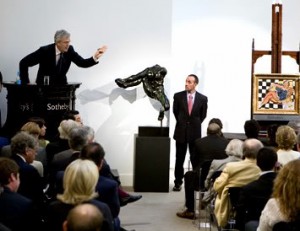
James Panero opened his April, 2009, Wall Street Journal article by coining the phrase “another day, another deaccession.” Mr. Panero was referring to the selling of works from museum permanent collections. “By narrowing or refining a collection, a museum can perform a valuable function.” Such statements have unleashed a powerful controversy for and against the sale of museum acquisitions.
The American Association of Museums (AAM) and the American Association of Museum Directors (AAMD) both have strict guidelines for such sales. Both forbid the sale of art to boost general operating expenses or to underwrite loans with the permanent collection as collateral. The guidelines are much more general (i.e. vague) when it comes to selling one work to acquire another. “A museum can raise money in a restricted endowment from the sale to be used for purchase of art that might better serve its mission.”

During the last three fiscal years, the Met has netted $3.7 million from the sale of art from the permanent collection. Director, Thomas Campbell, likens such a sale to the pruning of a valued tree, a healthy part of maintaining a valuable permanent collection.

The university museum is by far the most vulnerable of arts institutions in this respect. The university is responsible, not only for the running of the museum, but the running of all aspects of the university. In early 2009, Brandeis University shocked the arts and academic communities by announcing that it would close its Rose Art Museum and sell the entire collection to keep the University afloat. While those who did not have to turn on the lights or meet faculty salaries damned this action, Brandeis was not alone in placing the art collection low on the list of priorities. Numerous colleges and universities have been faced with the same dilemma.

Isn’t it far better to fill a permanent collection with works that are pertinent to each other? If your museum promotes Native American art, why not sell that minor impressionist painting to acquire an authentic teepee? Couldn’t a belle époque gallery make better use of that minor impressionist? Should Museum X hold twelve Chagalls in their permanent collection and be the only institution in the state to possess his work? In the same train of thought, is the museum obligated to accept the gift of a work or works to a permanent collection that obviously does not belong? Smacks of unintelligent greed to me!
There are so many issues facing museums today. Money is, of course, the primary problem. But issues of insuring the permanent collection, proper care and storage, and maintenance of the facilities also loom large for directors and curators. Paintings are often put into storage without proper preparation, ultimately resulting in damage. Insurance costs for art increases every day. Museum operation is a costly venture that even long-established institutions must now view as an unaffordable luxury. But we just keep gathering and gathering as if the worth of the museum is based on how many works we have and not on what we have. I do believe that if you are a seafood restaurant whose role and mission is to serve the finest seafood, you are doing yourself a dis-service to add chicken to your menu, even if someone gives you a coop-full!









